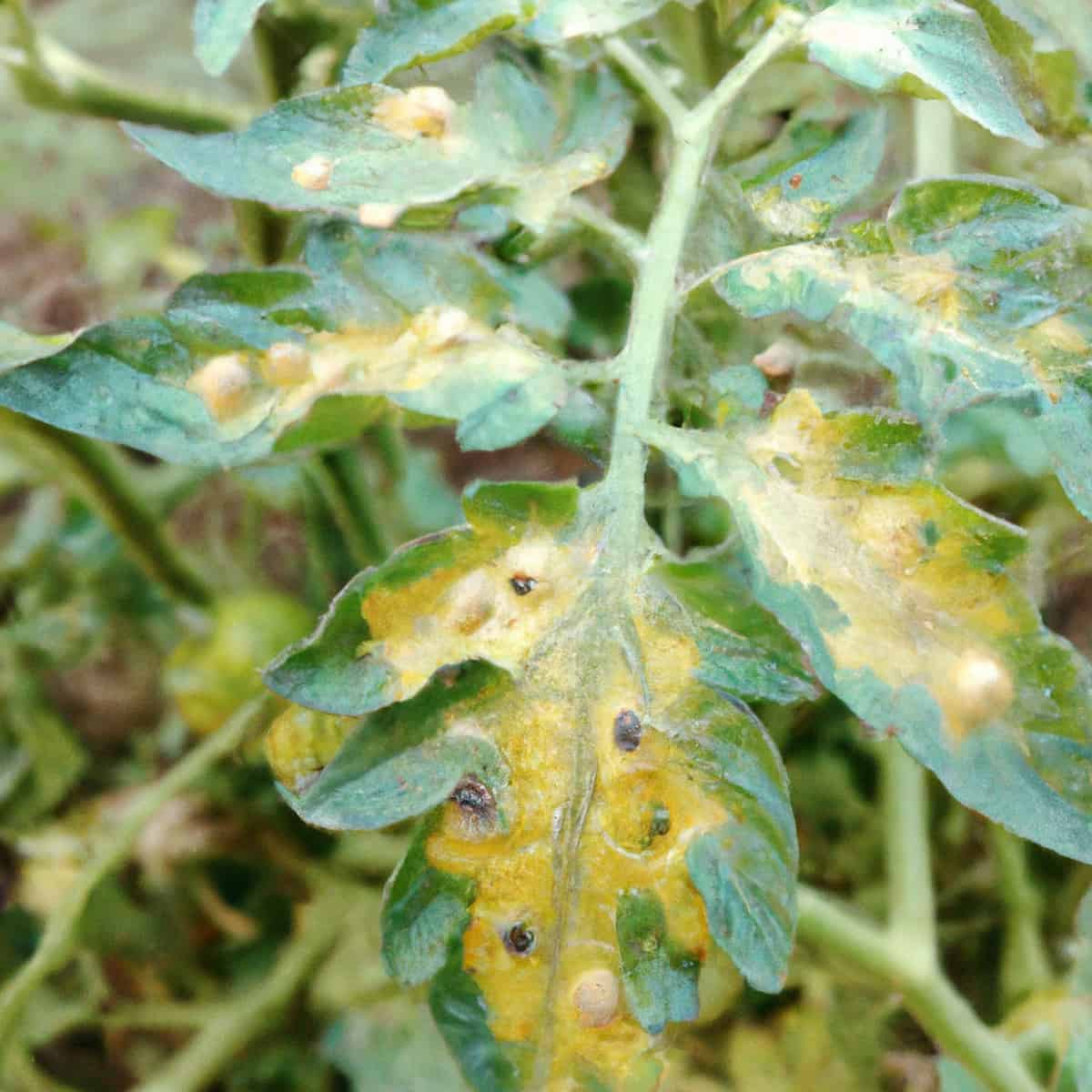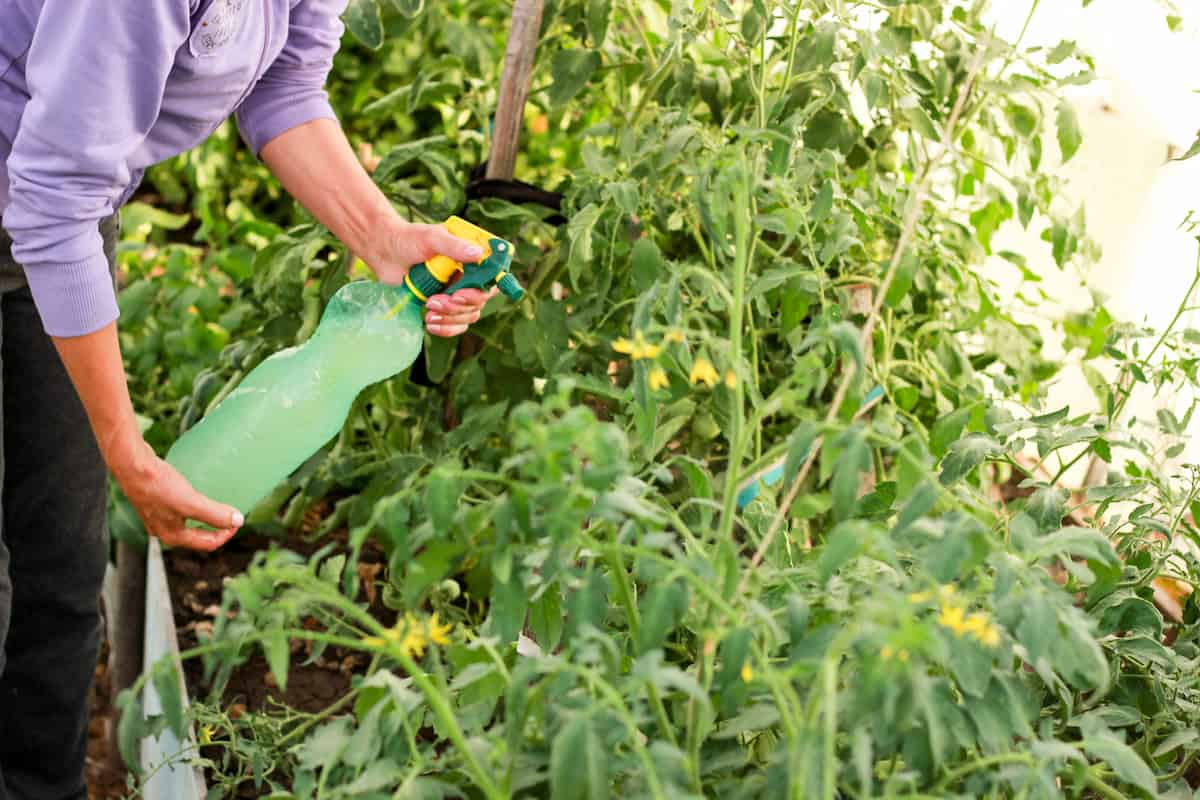The bacterial spot of tomato is a serious and widespread disease that affects tomato plants. It can have an impact on both the yield and marketability of the crop. This disease is caused by the bacterium Xanthomonas vesicatoria. It is particularly prevalent in warm and wet climates and greenhouses.
Bacterial spot of tomatoes is a concern for farmers and gardeners, particularly in regions such as Wisconsin, where the disease is frequently observed. The infection can cause leaf spots and fruit spots and can even lead to wilting and death of the plant if left uncontrolled. To mitigate the effects of bacterial spots, it is important to understand the disease, its causes, and methods of prevention and control.

Bacterial Spot Management in Tomato
The Causal Organism of Bacterial Spot
The bacterial spot of tomato is caused by various species of the bacterium Xanthomonas, including Xanthomonas vesicatoria, Xanthomonas euvesicatoria, Xanthomonas gardneri, and Xanthomonas perforans. These bacteria are highly contagious and can be easily spread through contaminated seeds and transplants, as well as through wounds on the plant.
The pathogens enter the plant through natural openings, such as stomates. They can quickly spread throughout the plant causing significant damage. Bacterial spots can cause yellow or brown circular leaf spots, fruit spots, and in severe cases, wilting and death of the plant.
The Disease Cycle of Bacterial Spot
The disease cycle of the bacterial spot of tomato starts with the survival of the bacteria from one season to the next in various sources such as crop debris, volunteer tomatoes, and weed hosts such as nightshade and groundcherry. The bacterium can also persist on seed and be introduced into a new growing area through contaminated seed or transplants.
Once introduced into a field or garden, the bacterium can spread rapidly through splashing water from rain or irrigation. The pathogen enters the plant through stomates or wounds. It can quickly spread throughout the plant causing significant damage. As the disease progresses, yellow or brown circular spots can develop on the leaves, spreading to other parts of the plant and causing wilting, death of the leaves, and reduced yield. The bacterium can also infect fruit, causing small, raised spots that can lead to unmarketable fruit.
Causes/conditions Favorable for Bacterial Spot Disease Spread in The Field.
The bacterial spot of tomato is favored by certain environmental conditions that promote the development and spread of the disease in the field. The following conditions are favorable for the spread of bacterial spot:
- Cool, wet weather: Development of the disease is promoted by cool, wet weather conditions with temperatures ranging from 70-80°F. This weather creates an ideal environment for the bacteria to thrive and spread.
- Mid-season: Infection is most common when the weather is cool and wet and the plant is actively growing.
- Rainstorms: Windy rainstorms can spread the disease as the bacteria can be easily splashed from one plant to another.
- Overhead irrigation: Overhead irrigation can also contribute to the spread of the disease by spreading the bacteria from one plant to another through splashing water.
In case you missed it: Bacterial Canker Management in Tomato: Symptoms, Treatment, Chemical, Biological, Natural, and Organic Control

Symptoms of Bacterial Spot Disease
Bacterial spots in tomatoes can cause a range of symptoms and signs on both seedlings and mature plants, as well as on the fruit. The following are the common symptoms of bacterial spot:
- Seedlings: The disease can cause severe defoliation on seedlings, with the leaves turning yellow or light green and eventually wilting and dying.
- Older leaves: The disease occurs primarily on older plants and appears in water-soaked areas. The spots turn from yellow or light green to black or dark brown.
- Leaf spots: Older leaf spots are black, slightly raised, and superficial, with a diameter of up to 0.3 inches (7.5 mm). Larger leaf scars may also appear, particularly on the leaf margins.
- Immature fruit: Symptoms on immature fruit are initially sunken and surrounded by a water-soaked halo that quickly fades. Fruit spots enlarge, turn brown, and become scabby, reducing the fruit’s marketability.
Bacterial Spot Disease Management in Tomato by Cultural Method
Cultural methods are an effective way to manage bacterial spot disease in tomato crops. The following cultural practices can help reduce the spread and severity of the disease:
- Crop rotation: Rotating fields out of tomato and pepper for twelve months before planting either crop again can help reduce the risk of disease spread.
- Cleanup (Sanitation): Promptly destroying crops after the last harvest, destroying spring crops before transplanting a fall crop on the same farm, and not replanting into plastic or organic mulch used for a previous crop can help stop bacteria from multiplying in and on plants.
- Row and Plant Spacing: The longer the leaves are wet, the greater the risk of bacterial spot. Spacing rows eight to twelve feet apart for tomatoes and eight feet apart for pepper and leaving a minimum of twenty-four inches between tomato plants and eighteen inches between pepper plants can help reduce the severity of the disease.
- Handling Plants: It is important to handle plants when they have dried after dew or rain to avoid spreading bacteria when workers handle wet plants.
Bacterial Spot Disease Management in Tomato by The Chemical Method
Chemical control methods can manage bacterial spot disease in tomato crops. However, starting the chemical control program is important before disease symptoms appear. Here are some guidelines for chemical control of a bacterial spot in tomatoes:
- Timing: Begin spray applications two weeks after transplanting in the spring and one week after transplanting in the fall. Spray on a weekly schedule.
- Products: The most effective chemical control programs include copper at the highest labeled rate, as well as Actigard, Mancozeb, or Tanos. Note that copper should not be mixed with Actigard due to the phytotoxicity of the mixture.
- Pre-Harvest Interval (PHI): When using Actigard, Mancozeb, or Tanos, it is important to follow the pre-harvest interval guidelines. Actigard has a 14-day PHI, Mancozeb has a 7-day PHI, and Tanos has a 3-day PHI. Consider using Tanos + copper weekly after harvesting starts to make scheduling harvests easier.
- Caution: While chemical control programs can reduce the severity of bacterial spots, they may also reduce yields by 3% to 17%. It is important to assess whether the cost and labor of spraying for bacterial spots increase net profits on your farm.
In case you missed it: Damping Off Disease Management in Tomato: Symptoms, Treatment, Chemical, Biological, Natural, and Organic Control

Preventive Measures for Control of Disease Bacterial Spot
- Use certified, disease-free seeds to start new crops.
- Grow resistant varieties if available.
- Leave enough space between plants and use stakes to keep them upright.
- Remove and dispose of any infected plant parts, such as leaves with spots, promptly.
- Keep the field free of weeds and maintain good hygiene.
- Apply mulch to the soil to prevent contamination.
- Clean tools and equipment after use to avoid spreading the disease.
- Plough deep plant debris after harvest or remove it and leave the soil idle for a few weeks or months to allow solarization.
- Implement a 2-3 year crop rotation with a non-susceptible crop to reduce the build-up of the pathogen in the soil.
Conclusion
To prevent the spread of the Bacterial spot, it is important to practice good sanitation, such as removing infected plant debris and avoiding overhead irrigation. Using disease-free seeds and transplants, rotating crops, and applying copper-based fungicides can also help reduce the disease’s severity and prevent it from becoming a major issue in your tomato crop.
- Beneficial Insects in Pest Management
- Natural Solutions for Pest Control in Flower Gardens
- Types of Fungicides Used in Agriculture
- Common Issues in the Fruit Development Stage of Pomegranate Farming
- Fruit Development Issues in Papaya: Easy Solutions and Treatment
- Soil-Borne Diseases and How to Protect Your Plants
- Practices to Prevent Disease Spread in the Garden
- From Wilted to Thriving: How to Treat Root Rot Naturally in Houseplants
- Natural Remedies to Cure Brown Spots on Fig Tree Leaves